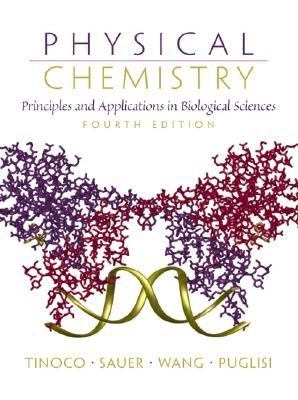217187
9780130959430
Physical Chemistry Principles and Applications in Biological Sciences
by Tinoco, Ignacio, Puglisi, Joseph D., Sauer, Kenneth
About this item
- Condition: New
- Provider: gridfreed
- Provider Rating: 68%
- Ships From: San Diego, CA
- Shipping: Standard
- Comments: In shrink wrap. Looks like an interesting title!

About this item
- Condition: New
- Provider: Rhody Shop
- Provider Rating: 47%
- Ships From: Wrentham, MA
- Shipping: Standard (tracking available)
- Comments: ALTERNATE EDITION: International Edition Book - Brand New with different ISBN and title! Fast reliable shipping, please contact us for any query. Supplemental items not usually included.

About this item
- Condition: Good
- Provider: BooksRun
- Provider Rating: 95%
- Ships From: Philadelphia, PA
- Shipping: Standard, Expedited
- Comments: Ship within 24hrs. Satisfaction 100% guaranteed. APO/FPO addresses supported

Product details
- ISBN-13: 9780130959430
- ISBN: 013095943X
- Edition: 4
- Publication Date: 2001
- Publisher: Prentice Hall
AUTHOR
2 Customer Product ReviewsSUMMARY
PREFACE There is a deep sense of pleasure to be experienced when the patterns and symmetry of nature are revealed. Physical chemistry provides the methods to discover and understand these patterns. We think that not only is it important to learn and apply physical chemistry to biological problems, it may even be fun. In this book, we have tried to capture some of the excitement of making new discoveries and finding answers to fundamental questions. This is not an encyclopedia of physical chemistry. Rather, we have written this text specifically with the life-science student in mind. We present a streamlined treatment that covers the core aspects of biophysical chemistry (thermodynamics and kinetics as well as quantum mechanics, spectroscopy, and X-ray diffraction), which are of great importance to students of biology and biochemistry. Essentially all applications of the concepts are to systems of interest to life-science students; nearly all the problems apply to life-science examples. For this fourth edition we are joined by Joseph Puglisi, a new, young author who strengthens the structural biology content of the book. We have also tried to make the book more reader-friendly. In particular, we omit fewer steps in the explanations to make the material more understandable, and we have followed the many helpful and specific recommendations of our reviewers to improve the writing throughout. Important new topics, such as single-molecule thermodynamics, kinetics, and spectroscopy, are introduced. Subjects that have become less pertinent to current biophysical chemistry have been deleted or de-emphasized. Reference lists for each chapter have been updated. However, the format and organization of the book is essentially unchanged. Chapter 1 introduces representative areas of active current research in biophysical chemistry and molecular biology: the human genome, the transfer of genetic information from DNA to RNA to protein, ion channels, and cell-to-cell communication. We encourage students to read the current literature to see how the vocabulary and concepts of physical chemistry are used in solving biological problems. Chapters 2 through 5 cover the laws of thermodynamics and their applications to chemical reactions and physical processes. Essentially all of the examples and problems deal with biochemical and biological systems. For example, after defining work as a force multiplied by the distance moved (the displacement), we discuss the experimental measurement of the work necessary to stretch a single DNA molecule from its random-coiled form to an extended rod. Molecular interpretations of energies and entropies are emphasized in each of the chapters. Chapter 4, "Free Energy and Chemical Equilibria," now starts with the application of the chemical potential td chemical reactions. We think that this will make it easier to understand the logic relating activities and equilibrium constants to free energy. Binding of ligands and equilibria between phases are described in chapter 5, "Free Energy and Physical Equilibria." We discuss in detail the allosteric effect and the cooperative binding of oxygen by hemoglobin. We also describe the formation of lipid monolayers, lipid bilayers, and micelles, and their structures are compared to biological membranes. Chapters 6 through 8 cover molecular motion and chemical kinetics. Chapter 6, "Molecular Motion and Transport Properties," starts with the Brownian motion on an aqueous surface of a single lipid molecule labeled with a fluorescent dye. The random motion of the molecule can be followed to test Einstein's equation relating average distance traveled by a single molecule to a bulk diffusion coefficient. Following this direct experimental demonstration of thermal motion of a molecule, we introduce the kinetic theory of gases and discuss transport properties (diffusion, sedimentation, and electrophoresis) of macromolecules. The next two chapTinoco, Ignacio is the author of 'Physical Chemistry Principles and Applications in Biological Sciences', published 2001 under ISBN 9780130959430 and ISBN 013095943X.
[read more]Customer reviews
{{post.questionOneAnswer|unescape}} {{post.questionTwoAnswer|unescape}}
[read more]


